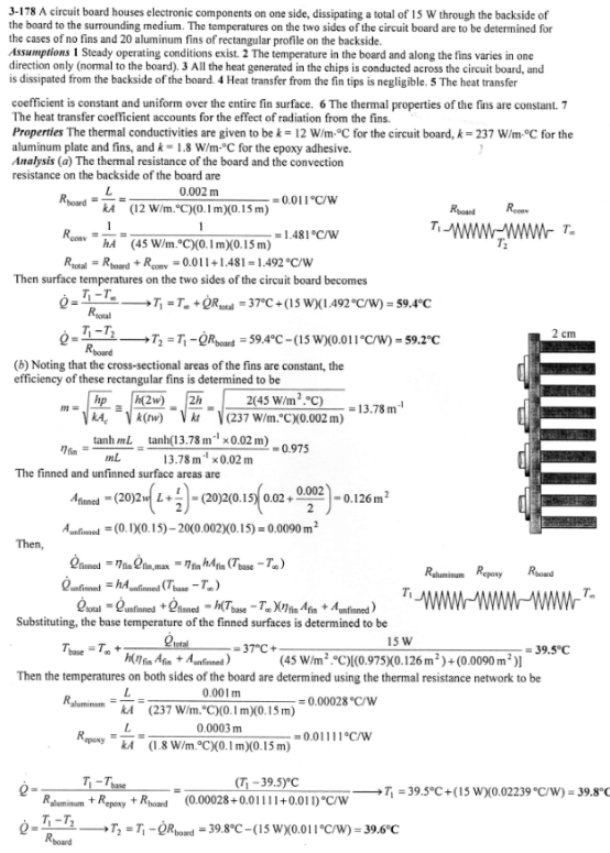A 0.2 –cm-thick, 10-cm-high, and 15-cm-long circuit board houses electronic components on one side that dissipate a total of 15 W of heat uniformly. The board is impregnated with conducting metal fillings and has an effective thermal conductivity of 12 W/m K. All the heat generated in the components is conducted across the circuit board and is dissipated from the back side of the board to a medium at 37 C, with a heat transfer coefficient of 45 W/m^2 K. (a) Determine the surface temperatures on the two sides of the circuit board. (b) Now a 0.1-cm-thick, 10-cm-high, and 15-cm-long aluminum plate (k=237 W/mK) with 20 0.2-cm-thick, 2-cm-long, and 15-cm-wide aluminum fins of rectangular profile are attached to the back side of the circuit board with a 0.03-cm-thick epoxy adhesive (k=1.8 W/mK). Determine the new temperatures on the two sides of the circuit board.

A 0.2 –cm-thick, 10-cm-high, and 15-cm-long circuit board houses electronic components on one side that dissipate a total of 15 W of heat uniformly. The board is impregnated with conducting metal fillings and has an effective thermal conductivity of 12 W/m K. All the heat generated in the components is conducted across the circuit board and is dissipated from the back side of the board to a medium at 37 C, with a heat transfer coefficient of 45 W/m^2 K. (a) Determine the surface temperatures on the two sides of the circuit board. (b) Now a 0.1-cm-thick, 10-cm-high, and 15-cm-long aluminum plate (k=237 W/mK) with 20 0.2-cm-thick, 2-cm-long, and 15-cm-wide aluminum fins of rectangular profile are attached to the back side of the circuit board with a 0.03-cm-thick epoxy adhesive (k=1.8 W/mK). Determine the new temperatures on the two sides of the circuit board.
